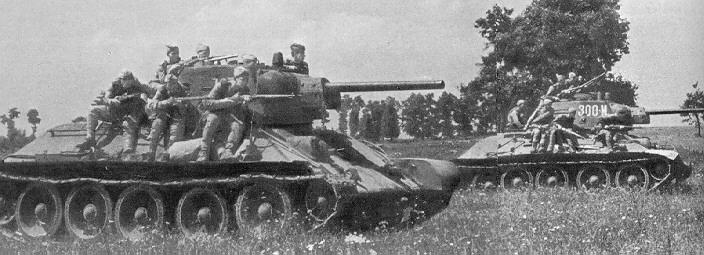 One of the basic processes of combat is movement. According to Trevor Dupuy, one of the most important outcomes of ground combat is advance against opposition. He spent a good amount of time examining historical advance rates, seeking to determine if technological change had led to increases in advance rates over time. On the face of it, he determined that daily rates had increased by about one-half, from about 17 kilometers per day during the Napoleonic Era, to about 26 kilometers a day by the 1973 Arab-Israeli War. However, when calculated by the duration of a campaign, average daily advance rates did not appear to have changed much at all over 200 years, despite the advent of mechanization.
One of the basic processes of combat is movement. According to Trevor Dupuy, one of the most important outcomes of ground combat is advance against opposition. He spent a good amount of time examining historical advance rates, seeking to determine if technological change had led to increases in advance rates over time. On the face of it, he determined that daily rates had increased by about one-half, from about 17 kilometers per day during the Napoleonic Era, to about 26 kilometers a day by the 1973 Arab-Israeli War. However, when calculated by the duration of a campaign, average daily advance rates did not appear to have changed much at all over 200 years, despite the advent of mechanization.
His research on the topic yielded another list of verities. He did not believe they accounted for every factor or influence on advance rates, but he did think they accounted for most of them. He was also reasonably confident that no weapons or means of conveyance then foreseen would alter the basic relationships in his list.[1]
- Advance against opposition requires local combat power preponderance.
- There is no direct relationship between advance rates and force strength ratios.
- Under comparable conditions, small forces advance faster than larger forces.
- Advance rates vary inversely with the strength of the defender’s fortifications.
- Advance rates are greater for a force that achieves surprise.
- Advance rates decline daily in sustained operations.
- Superior relative combat effectiveness increases an attacker’s advance rate.
- An “all-out” effort increases advance rates at a cost in higher casualties.
- Advance rates are reduced by difficult terrain.
- Advance rates are reduced by rivers and canals.
- Advance rates vary positively with the quality and density of roads.
- Advance rates are reduced by bad weather.
- Advance rates are lower at night than in daytime.
- Advance rates are reduced by inadequate supply.
- Advance rates reflect interactions with friendly and enemy missions.
NOTES
[1] Trevor N. Dupuy, Understanding War: History and Theory of Combat (New York: Paragon House, 1987), pp. 158–163.

U.S. Forces haven’t had much opportunity to perform WWII style tactical movements and if we had such opportunity the increased use of IEDs by EN forces would slow our rates of march. Also, we don’t move large formations of infantry on the ground anymore.